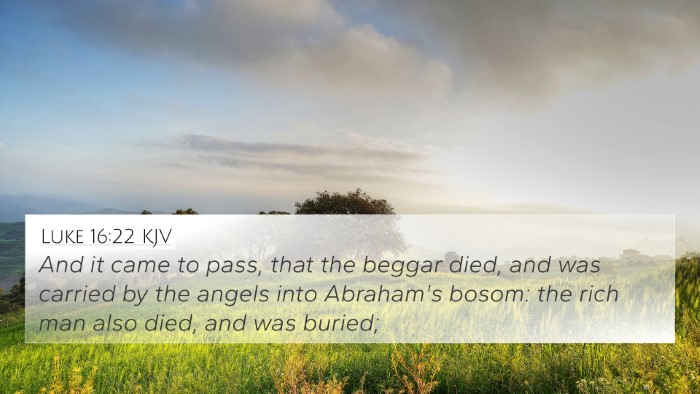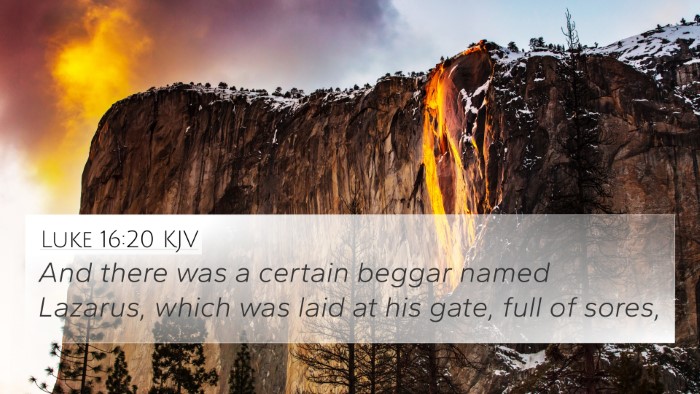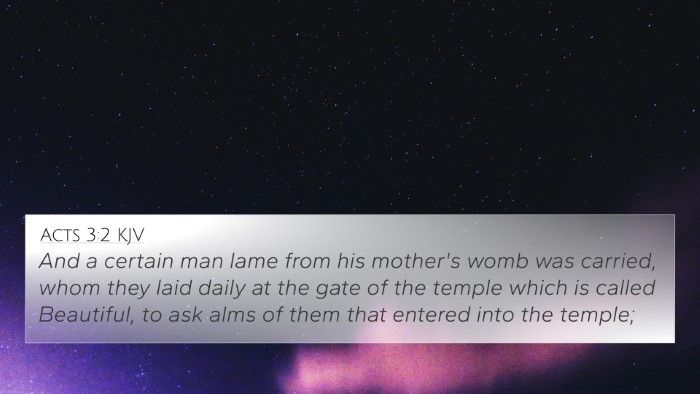Summary and Interpretation of Mark 10:46
Mark 10:46: "Then they came to Jericho. As Jesus and his disciples, together with a large crowd, were leaving the city, a blind man, Bartimaeus (that is, the son of Timaeus), was sitting by the roadside begging."
Contextual Background
This verse introduces a significant event in which Jesus interacts with a blind beggar named Bartimaeus as He leaves Jericho. This account, found in the Gospel of Mark, captures the compassion of Jesus and serves as a powerful illustration of faith, healing, and the transformative power of Christ.
Commentary Insights
Matthew Henry's Commentary
Matthew Henry emphasizes Bartimaeus’s position as a beggar, illustrating his desolation and neediness. He observes that Bartimaeus’s blindness represents spiritual blindness prevalent in society. Henry notes that he cried out for mercy, a reflection of the recognition of his own helpless state and his trust in Jesus’ ability to save.
Albert Barnes’ Notes
Albert Barnes highlights the importance of Bartimaeus’s acknowledgment of Jesus as the “Son of David”, which is a declaration of faith and recognition of Jesus’ messianic identity. This title indicates a deeper understanding of Jesus' role and signifies a connection to prophetic fulfillment. Barnes further discusses the crowd's initial reaction, noting their attempts to silence Bartimaeus, which can symbolize societal apathy toward individuals in need.
Adam Clarke's Commentary
Adam Clarke expands on the various interpretations of Bartimaeus’s actions, pointing out that his persistence in calling out to Jesus demonstrates a strong faith. Clarke examines the significance of Jesus stopping to address Bartimaeus amidst the large crowd, suggesting that true faith captures the attention of Christ. He highlights the emphasis on individual worth, implying that even in a throng, Jesus is aware of and responsive to individual needs.
Thematic Connections
The thematic essence of this verse relates to several broader biblical concepts, such as the idea of faith healing, the importance of recognition of one’s need for salvation, and the way Jesus interacts compassionately with marginalized individuals.
Bible Verse Cross-References
- Matthew 9:27-31: Jesus healing two blind men, highlighting faith as a precursor to healing.
- Luke 18:35-43: A parallel account of Zacchaeus portraying faith and restoration through Jesus.
- Isaiah 30:18: God's promise of compassion for those who wait for Him, similar to Bartimaeus’ persistence.
- Psalms 34:6: “This poor man cried, and the Lord heard him,” paralleling Bartimaeus’s cry for mercy.
- Mark 8:22-26: The healing of a blind man at Bethsaida further illustrates Jesus’ miraculous powers.
- John 9:1-12: The story of the man born blind, reinforcing themes of spiritual insight and physical healing.
- Hebrews 11:6: “Without faith, it is impossible to please Him,” relating to Bartimaeus's faith in Jesus.
Application and Reflection
Mark 10:46 calls for reflection on personal faith and persistence in seeking the Lord. Bartimaeus’s example encourages believers to vocalize their needs to God regardless of opposition or challenges. The narrative reminds us that Jesus is attentive to the cries of those in need, providing inspiration to approach Him with confidence and assurance of His compassion.
Connecting Biblical Texts
This verse, like many in the Gospel accounts, invites readers to explore cross-referencing Bible verses for a deeper understanding of themes related to faith, healing, and divine compassion. Effective use of biblical concordances and study tools can aid in uncovering links between Old Testament prophecies and New Testament fulfillments, thereby enriching one’s spiritual journey.
Further Study
For those interested in exploring connections between Bible verses, utilizing resources such as a Bible concordance or a bible cross-reference guide can provide insights into the broader scriptural context and deepen one's understanding of inter-Biblical dialogue.








